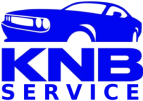- Introduction
- Overview of the Importance of Quality Paint Services
- Impact of Paint on Vehicle Aesthetics and Resale Value
- Choosing the Right Paint for Your Vehicle
- Types of Automotive Paints
- Factors to Consider when Selecting Paint Colors
- Professional Assessment and Preparation
- The Importance of a Thorough Vehicle Inspection
- Surface Preparation for Optimal Paint Adhesion
- Advanced Painting Techniques
- Overview of State-of-the-Art Painting Technologies
- Benefits of High-Quality Spray Booths
- Color Matching and Customization
- Techniques for Achieving Precise Color Matching
- Exploring Custom Paint Options for a Unique Look
- Quality Control and Assurance
- Importance of Quality Checks during and after Painting
- Addressing Common Paint Defects and Imperfections
- Environmental Considerations
- Eco-Friendly Paint Options
- Compliance with Environmental Standards in Automotive Painting
- Cost Estimates and Budgeting
- Factors Affecting the Cost of Paint Services
- Tips for Budgeting and Cost-Effective Choices
- Case Studies and Success Stories
- Showcase of Before-and-After Projects
- Customer Testimonials and Satisfaction Stories
- Maintenance Tips for Preserving Paint Quality
- Recommendations for Post-Paint Care
- Protecting Your Vehicle’s Paint for Longevity
- Conclusion
- Recap of Key Points
- Encouragement for Investing in Professional Paint Services
1.Introduction
In the fast-paced world of automotive aesthetics, the significance of quality paint services cannot be overstated. A well-executed paint job not only enhances the visual appeal of a vehicle but also plays a pivotal role in determining its resale value. As we delve into the realm of paint services for your beloved automobiles, this article aims to provide a comprehensive overview of why opting for high-quality paint services is not just a matter of aesthetics, but a strategic investment in the long-term value and appeal of your vehicle.
1.1 Overview of the Importance of Quality Paint Services
Delving into the nuanced world of automotive aesthetics, we explore the multifaceted role that quality paint services play in the overall well-being of your vehicle. From protecting the exterior against environmental elements to elevating its visual allure, the significance of this often-underestimated aspect becomes apparent.
1.2 Impact of Paint on Vehicle Aesthetics and Resale Value
Unraveling the connection between a meticulously executed paint job and the resale value of your automobile, we discuss how the right choice of colors, application techniques, and paint quality can substantially influence how potential buyers perceive and appraise your vehicle. A visually appealing exterior not only captures attention but also leaves a lasting impression that can significantly impact the resale negotiations.
As we embark on this journey through the realm of paint services, let’s explore the intricacies of achieving a flawless finish and the enduring impact it can have on your automotive pride and joy.
2. Choosing the Right Paint for Your Vehicle
Selecting the appropriate paint for your vehicle is a crucial decision that goes beyond mere aesthetics. This section will guide you through the various considerations involved in choosing the right automotive paint to ensure a lasting and visually stunning finish.
2.1 Types of Automotive Paints
Dive into the diverse world of automotive paints, exploring the differences between enamel, lacquer, and urethane paints. Understand the unique characteristics of each type, including durability, finish, and maintenance requirements. This knowledge forms the foundation for making an informed decision based on your preferences and the intended use of your vehicle.
2.2 Factors to Consider when Selecting Paint Colors
The color of your vehicle can significantly impact its overall appearance and resonance with your personal style. Uncover the psychological and practical aspects of different paint colors, and learn how to choose a hue that not only reflects your personality but also complements the design features of your automobile. This section will provide valuable insights into factors such as trends, climate considerations, and personal preferences that influence color selection.
By the end of this section, you’ll be equipped with the knowledge needed to make an informed decision when it comes to choosing the perfect paint for your vehicle, ensuring a result that aligns with your vision and stands the test of time.
Before the brush touches the surface, a thorough assessment and meticulous preparation lay the groundwork for a flawless paint job. This section explores the critical steps involved in ensuring your vehicle is ready for the transformative process of professional paint services.
3.1 The Importance of a Thorough Vehicle Inspection
Embark on a journey of scrutiny as we highlight the significance of a comprehensive vehicle inspection. From identifying existing damage to assessing the overall condition of the exterior, a meticulous inspection informs the subsequent steps in the painting process. Discover the key checkpoints that professionals consider to address any underlying issues and set the stage for a seamless paint application.
3.2 Surface Preparation for Optimal Paint Adhesion
Delve into the intricate world of surface preparation, where every detail matters. Explore the techniques employed by seasoned professionals to ensure optimal paint adhesion. From sanding and priming to addressing imperfections, this section provides a step-by-step guide to achieving a flawless canvas for the paint application. Understand how proper surface preparation contributes to the longevity and quality of the final finish.
By the end of this section, you’ll gain insights into the meticulous processes undertaken by professionals to assess and prepare the vehicle for the transformative artistry of paint services. A well-prepared surface sets the stage for a paint job that not only meets but exceeds expectations.
4. Advanced Painting Techniques
As we delve deeper into the realm of automotive aesthetics, this section explores the advanced painting techniques employed by skilled professionals to elevate your vehicle’s finish to new heights. Discover the state-of-the-art technologies and methodologies that contribute to achieving a flawless and enduring paint job.
4.1 Overview of State-of-the-Art Painting Technologies
Embark on a journey through cutting-edge painting technologies that have revolutionized the automotive industry. From high-precision spray guns to automated application systems, explore how these advancements enhance the accuracy and efficiency of the painting process. Gain insights into the tools of the trade that contribute to achieving a uniform and professional finish.
4.2 Benefits of High-Quality Spray Booths
Step into the controlled environment of a high-quality spray booth and understand its pivotal role in the painting process. Explore the benefits of using spray booths, including dust control, temperature regulation, and minimized external contaminants. Uncover how these specialized environments contribute to achieving a flawless, factory-like finish on your vehicle.
By the end of this section, you’ll have a comprehensive understanding of the advanced painting techniques and technologies that professionals utilize to ensure precision and excellence in every stroke. These innovations not only enhance the aesthetic appeal but also contribute to the durability and longevity of the painted surface.
5. Color Matching and Customization
In the realm of automotive aesthetics, achieving the perfect color and customization is an art form. This section delves into the intricacies of color matching and explores the possibilities of customization to ensure your vehicle reflects your unique style.
5.1 Techniques for Achieving Precise Color Matching
Uncover the secrets behind precise color matching as we explore the techniques used by professionals to ensure consistency and accuracy. From computerized color matching systems to manual methods, understand how the right approach guarantees that touch-ups seamlessly blend with the existing paint. This section provides insights into the importance of lighting conditions, color charts, and skilled craftsmanship in achieving a harmonious and flawless color match.
5.2 Exploring Custom Paint Options for a Unique Look
Delve into the world of custom paint options that go beyond the standard color palette. From metallic finishes to pearlized effects, discover how customization can transform your vehicle into a unique work of art. This section explores popular custom paint trends, techniques, and considerations, empowering you to make personalized choices that set your vehicle apart from the ordinary.
By the end of this section, you’ll have a nuanced understanding of the artistry involved in color matching and customization. Whether aiming for a seamless touch-up or a bold, one-of-a-kind finish, these insights will guide you towards achieving the perfect aesthetic expression for your automotive masterpiece.
6. Quality Control and Assurance
Ensuring the highest standards of excellence, this section focuses on the critical aspect of quality control and assurance in the realm of professional paint services. Explore the meticulous processes that professionals undertake to guarantee a flawless and durable finish on your vehicle.
6.1 Importance of Quality Checks during and after Painting
Take a closer look at the quality checks integrated into the painting process itself. From monitoring paint thickness to inspecting for imperfections, this section highlights the steps taken during the application phase. Understand how professionals ensure consistency, color accuracy, and adherence to the desired finish, setting the stage for a result that exceeds expectations.
6.2 Addressing Common Paint Defects and Imperfections
No masterpiece is without its challenges, and the same holds true for automotive paint jobs. Delve into the common defects and imperfections that can arise post-painting and explore the corrective measures employed by professionals. From orange peel texture to paint runs, gain insights into how quality control measures and corrective actions contribute to delivering a flawless final product.
By the end of this section, you’ll appreciate the meticulous nature of quality control and assurance in professional paint services. Whether it’s preventing issues during the application or addressing post-painting imperfections, these measures ensure that your vehicle emerges from the process not only aesthetically pleasing but also with a level of quality that stands the test of time.
7. Environmental Considerations
In an era of heightened environmental awareness, this section explores the eco-friendly aspects of automotive paint services, emphasizing the importance of sustainability and compliance with environmental standards.
7.1 Eco-Friendly Paint Options
Discover the advancements in eco-friendly paint formulations that prioritize sustainability without compromising quality. Explore water-based and low-VOC (Volatile Organic Compounds) paints, understanding how these alternatives contribute to reducing harmful emissions and environmental impact. This section delves into the benefits of choosing eco-friendly paint options for both your vehicle and the planet.
7.2 Compliance with Environmental Standards in Automotive Painting
Navigate through the regulatory landscape surrounding automotive painting and learn how professional body shops adhere to environmental standards. From waste disposal practices to energy-efficient equipment, gain insights into the measures taken to minimize the ecological footprint of the painting process. Understand the role of certifications and industry practices that signify a commitment to environmentally responsible automotive paint services.
By the end of this section, you’ll be well-informed about the eco-conscious choices available in the realm of automotive painting. The exploration of eco-friendly paint options and compliance with environmental standards will empower you to make choices that align with your values and contribute to a sustainable future.
8. Cost Estimates and Budgeting
Understanding the financial aspects of professional paint services is crucial for informed decision-making. This section provides insights into the factors influencing costs and offers practical tips for effective budgeting.
8.1 Factors Affecting the Cost of Paint Services
Explore the various factors that contribute to the overall cost of professional paint services. From the type of paint chosen to the extent of surface preparation required, delve into the considerations that impact the pricing structure. Understand the role of vehicle size, customization options, and the intricacies of the chosen color in determining the overall cost.
8.2 Tips for Budgeting and Cost-Effective Choices
Navigate the budgeting process with practical tips for optimizing costs without compromising on quality. This section offers guidance on making informed decisions, such as exploring alternative paint options, understanding the impact of customization on pricing, and negotiating transparently with service providers. Empower yourself with the knowledge needed to achieve a balance between quality and cost-effectiveness in your paint service investment.
By the end of this section, you’ll be equipped with the knowledge and strategies necessary for managing the financial aspects of professional paint services. From understanding cost determinants to implementing savvy budgeting practices, this information will guide you towards a well-informed and economically sound decision for your vehicle.
9. Case Studies and Success Stories
This section delves into real-world examples, showcasing the transformative power of professional paint services through engaging case studies and success stories. Explore the remarkable journeys of vehicles that underwent expert painting, highlighting the impact on aesthetics, durability, and overall satisfaction.
9.1 Showcase of Before-and-After Projects
Embark on a visual journey through a curated collection of before-and-after photographs, illustrating the remarkable transformations achieved by professional paint services. Witness the restoration of faded finishes, the correction of imperfections, and the enhancement of overall vehicle aesthetics. Each case study provides a glimpse into the challenges faced and the expert solutions applied to deliver stunning results.
9.2 Customer Testimonials and Satisfaction Stories
Experience the satisfaction of vehicle owners through firsthand accounts and testimonials. Hear stories of how professional paint services exceeded expectations, not only in terms of visual appeal but also in terms of longevity and customer satisfaction. Gain insights into the personalized experiences of individuals who entrusted their vehicles to skilled professionals, and discover the impact on their overall driving and ownership experience.
By the end of this section, you’ll have a deeper appreciation for the tangible outcomes of professional paint services. The featured case studies and success stories serve as testaments to the expertise and craftsmanship of professionals in the field, reinforcing the value of investing in high-quality paint services for your cherished vehicle.
10. Maintenance Tips for Preserving Paint Quality
Preserving the integrity and vibrancy of your vehicle’s paint extends beyond the initial service. In this section, explore practical tips and guidelines for maintaining the quality of your freshly painted vehicle, ensuring a lasting and lustrous finish.
10.1 Recommendations for Post-Paint Care
Dive into a comprehensive guide on post-paint care practices to safeguard the newly applied finish. From washing and drying techniques to choosing the right cleaning products, discover the steps that help maintain the brilliance of your vehicle’s paintwork. Understand how routine care routines can protect against environmental elements and ensure the longevity of the professionally applied paint.
10.2 Protecting Your Vehicle’s Paint for Longevity
Explore advanced strategies for protecting your vehicle’s paint from the challenges of daily use and environmental exposure. From the benefits of waxing and sealants to the advantages of using protective coatings, this section provides insights into proactive measures that enhance the durability of the paint. Learn how to shield your investment from factors like UV rays, harsh weather conditions, and contaminants.
By the end of this section, you’ll be equipped with a comprehensive set of maintenance tips to preserve the quality of your vehicle’s paint. From basic care routines to advanced protective measures, these guidelines will empower you to uphold the visual allure of your vehicle’s exterior and prolong the life of the professionally applied paint.
11. Conclusion
As we draw the canvas to a close, this article has guided you through the intricate world of professional paint services for your vehicle, emphasizing the transformative power and lasting impact of a quality paint job. Let’s recap the key takeaways and insights gained throughout this exploration.
11.1 Recap of Key Points
- Importance of Quality Paint Services: We started by recognizing the pivotal role that quality paint services play in enhancing the aesthetics of your vehicle and influencing its resale value.
- Choosing the Right Paint: Explored the diverse world of automotive paints, from types to colors, equipping you with the knowledge to make informed choices.
- Professional Assessment and Preparation: Highlighted the necessity of a thorough vehicle inspection and meticulous surface preparation, setting the stage for a flawless paint application.
- Advanced Painting Techniques: Explored cutting-edge technologies and methodologies that contribute to achieving a superior and enduring finish.
- Color Matching and Customization: Delved into the artistry of achieving precise color matches and exploring customization options for a unique and personalized look.
- Quality Control and Assurance: Explored the meticulous processes involved in ensuring a flawless outcome, both during and after the painting process.
- Environmental Considerations: Discussed the importance of eco-friendly paint options and compliance with environmental standards for a sustainable approach to automotive painting.
- Cost Estimates and Budgeting: Provided insights into the factors influencing costs and practical tips for effective budgeting in the realm of professional paint services.
- Case Studies and Success Stories: Showcased real-world examples and testimonials, illustrating the transformative impact of professional paint services.
- Maintenance Tips: Concluded with comprehensive maintenance tips to preserve the quality and longevity of your vehicle’s freshly painted finish.
11.2 Encouragement for Investing in Professional Paint Services
In conclusion, the investment in professional paint services is not just a financial one; it’s a commitment to elevating the visual appeal, protecting your investment, and ensuring long-term satisfaction with your vehicle. Whether you seek a flawless finish, unique customization, or eco-friendly options, the world of professional paint services offers a spectrum of possibilities to cater to your preferences.
As you embark on the journey of enhancing your vehicle’s aesthetics, remember that the expertise of professionals, coupled with informed decision-making and proactive maintenance, contributes to a driving experience that extends beyond the road—a true reflection of your style and pride.


